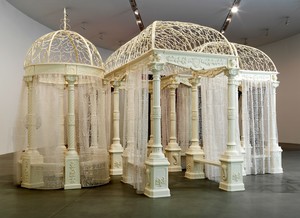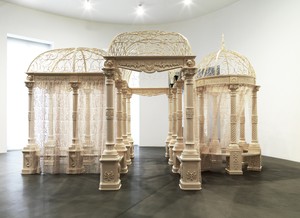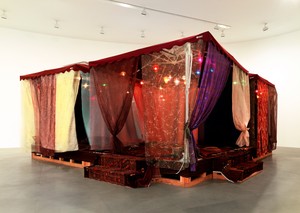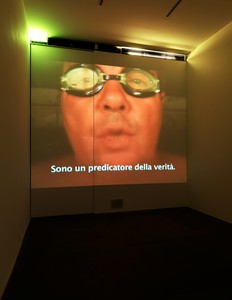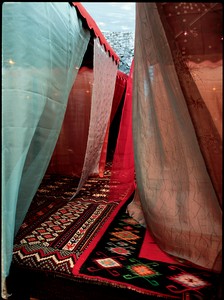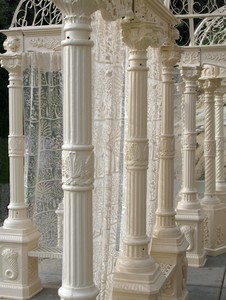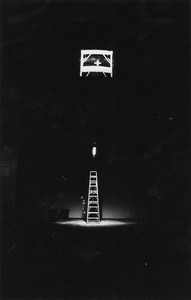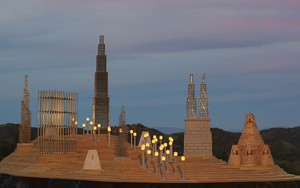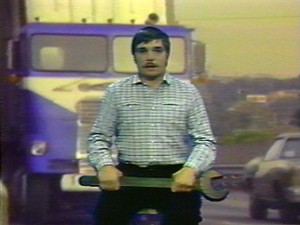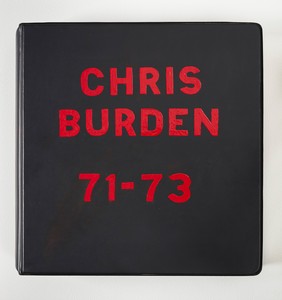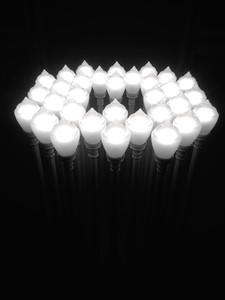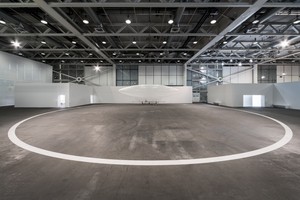Gagosian is pleased to present Chris Burden’s first exhibition in Rome in more than thirty years.
Burden continues his interest in built structures and the role they play in reflecting cultures. In three individual but interrelated works, he turns his attention to the beauty and metaphorical possibilities of the architectural folly.
At one end of the gallery Burden has recreated Nomadic Folly (2001). First presented at the Istanbul Biennial in 2001, this installation is his fantasy of a cultivated nomad’s tent. The structure is comprised of a large wooden deck made of Turkish cypress and four huge umbrellas. Visitors can relax and linger in this tentlike structure, replete with opulent handmade carpets, braided ropes, hanging glass and metal lamps, and rich, sensuous wedding fabrics embroidered with sparkling threads and traditional patterns. Soothing, seductive Turkish-Armenian music spills from the tent’s interior. At the other end of the gallery is Dreamer’s Folly (2010), a series of three highly ornamental cast-iron gazebos reminiscent of those common to traditional English gardens. The three gazebos have been reconfigured to form one structure. Lacy “tree of life” fabrics are draped around the exterior to complete a beautiful sanctuary in which to dream.
But the calm and beauty of this environment is violently disrupted by the video projection The Rant (2006), where Burden’s goggled face appears in close-up and many times larger than life, hovering just above water. In this performance he is a ranting xenophobic preacher delivering a short, intense message in French (with Italian subtitles), an impassion rejection of the Other.
Like all of Burden’s exhibitions, The Heart: Open or Closed resonates with ambiguity on many levels. This disarmingly beautiful installation may be his most tender and humanistic to date, pointing to the beauty in the heart of two different cultures and the hate that can divide them.
